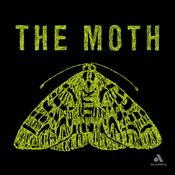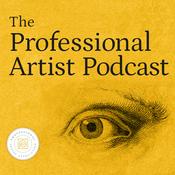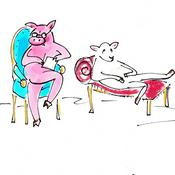681 episodes

Ansel Adams | Monolith, the Face of Half Dome
06/1/2026 | 19 mins.
Ansel Adams (1902-1984) was an iconic American photographer renowned for his dramatic black and white landscapes, particularly of Yosemite National Park. His distinctive style, characterized by sharp focus, expansive tonal range, and masterful composition, was shaped by his early passion for music, his deep connection with nature, and his innovative approach to photography. Adams co-founded Group f/64, advocating for "straight photography," and developed the Zone System, a precise technique for controlling exposure and development. His most famous works, like "Monolith, the Face of Half Dome," showcase his technical skill and artistic vision, capturing the grandeur of the American West. A dedicated conservationist, Adams used his photography to advocate for environmental protection. His legacy extends beyond his breathtaking images, inspiring generations of photographers and leaving an indelible mark on the art world. Check out my other podcasts Fun Facts Daily | Art Smart | Rainbow Puppy Science Lab Who ARTed is an Airwave Media Podcast. If you are interested in advertising on this or any other Airwave Media show, email: [email protected] Learn more about your ad choices. Visit megaphone.fm/adchoices

El Anatsui | Old Man's Cloth
05/1/2026 | 11 mins.
El Anatsui is a leading contemporary sculptor born in 1944 in Anyako, Ghana. Trained at the Kwame Nkrumah University of Science and Technology, Anatsui’s early education was heavily influenced by Western art traditions, which often neglected the rich artistic heritage of West Africa. After relocating to Nigeria in 1975 to teach at the University of Nigeria, Nsukka, he joined the Nsukka group, a collective dedicated to reviving traditional practices like Uli—an Igbo art form characterized by fluid linear drawings. This shift marked the beginning of his lifelong endeavor to blend traditional African motifs with contemporary sculptural techniques. Anatsui is best known for his monumental "metal cloths," which he began creating in the late 1990s using discarded liquor bottle caps and copper wire. A prime example is the 2003 piece Old Man's Cloth, a massive work measuring approximately 16 feet by 17 feet. These installations are intentionally malleable, allowing curators to fold and drape them differently for every display to create a "non-fixed form". Beyond their visual resemblance to traditional Ghanaian Kente cloth, these materials carry profound historical weight; they reference the transatlantic "Triangle Trade," where alcohol was used as a primary currency by Europeans to exchange for enslaved people in Africa. By employing a communal studio process involving dozens of assistants, Anatsui transforms industrial waste into high art that comments on colonialism, globalization, and the enduring strength of African heritage. Check out my other podcasts Fun Facts Daily | Art Smart | Rainbow Puppy Science Lab Who ARTed is an Airwave Media Podcast. If you are interested in advertising on this or any other Airwave Media show, email: [email protected] Learn more about your ad choices. Visit megaphone.fm/adchoices

Peter Paul Rubens International Man of Mystery
04/1/2026 | 9 mins.
Peter Paul Rubens wasn't your typical 17th-century artist. He produced magnificent Baroque masterpieces, his canvases overflowing with vibrant colors and dynamic figures. While Baroque art was known for its high drama, in this case, the real life of the artist may have been even more intriguing. Rubens was not only a highly skilled artist, he was also a shrewd diplomat and a cunning spy, a man who navigated the treacherous world of European politics with as much finesse as he wielded his paintbrush. This is an encore presentation. Every January/February, I release daily episodes to refresh everyone's memory on the 64 artists and artworks that will be included in my Arts Madness Tournament held in March. While most of these daily episodes will be reruns, I will continue publishing new episodes on Mondays. Check out my other podcasts Fun Facts Daily | Art Smart | Rainbow Puppy Science Lab Who ARTed is an Airwave Media Podcast. If you are interested in advertising on this or any other Airwave Media show, email: [email protected] Learn more about your ad choices. Visit megaphone.fm/adchoices

Maya Lin | Vietnam Veterans Memorial
03/1/2026 | 11 mins.
The Vietnam Veterans Memorial was established to honor those who died in the Vietnam War. Jan Scruggs, a veteran of the conflict, spearheaded the creation of the memorial and after a nationwide design competition, Maya Lin's design was chosen. Her design was controversial for its minimalist and non-traditional approach, but ultimately it was built and has become an important place for reflection and healing. The work is simple yet profound. The polished black granite is reflective like a mirror. It forces visitors to confront their own image alongside the names of the fallen creating a sense of connection and shared humanity. This is an encore presentation. Every January/February, I release daily episodes to refresh everyone's memory on the 64 artists and artworks that will be included in my Arts Madness Tournament held in March. While most of these daily episodes will be reruns, I will continue publishing new episodes on Mondays. The Vietnam Veterans Memorial is one of the 250 artworks required for AP Art History. Learn about more of those works by listening to my AP Art History Cram Session playlist on Spotify. Check out my other podcasts Fun Facts Daily | Art Smart | Rainbow Puppy Science Lab Who ARTed is an Airwave Media Podcast. If you are interested in advertising on this or any other Airwave Media show, email: [email protected] Learn more about your ad choices. Visit megaphone.fm/adchoices

Elaine de Kooning | Portrait of John F. Kennedy
02/1/2026 | 15 mins.
Elaine de Kooning (1918-1989) was a vital figure in 20th-century American art. She was a renowned Abstract Expressionist painter, portraitist, and writer. Elaine de Kooning's 1963 portrait of John F. Kennedy, now at the National Portrait Gallery, is a significant work reflecting her Abstract Expressionist style applied to portraiture. Commissioned by the Truman Library, the painting captures Kennedy's dynamic energy and charisma through vibrant colors, bold brushstrokes, and a fragmented, almost unfinished quality. Created during and after Kennedy's time in office, the work became a poignant memorial after his assassination, symbolizing the turbulence and vitality of his presidency, and cementing de Kooning's reputation as a master portraitist. Related episodes: Willem de Kooning Jackson Pollock Janet Sobel Lee Krasner Mark Rothko Erased de Kooning Check out my other podcasts Fun Facts Daily | Art Smart | Rainbow Puppy Science Lab Who ARTed is an Airwave Media Podcast. If you are interested in advertising on this or any other Airwave Media show, email: [email protected] Learn more about your ad choices. Visit megaphone.fm/adchoices
More Arts podcasts
Trending Arts podcasts
About Who Arted: Weekly Art History for All Ages
Listen to Who Arted: Weekly Art History for All Ages, 99% Invisible and many other podcasts from around the world with the radio.net app

Get the free radio.net app
- Stations and podcasts to bookmark
- Stream via Wi-Fi or Bluetooth
- Supports Carplay & Android Auto
- Many other app features
Get the free radio.net app
- Stations and podcasts to bookmark
- Stream via Wi-Fi or Bluetooth
- Supports Carplay & Android Auto
- Many other app features


Who Arted: Weekly Art History for All Ages
download the app,
start listening.






































